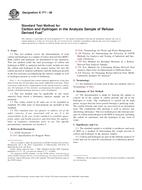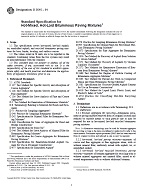1.1 This standard practice covers a procedure for determining the weakest detection path through the portal aperture and the worst-case orthogonal orientation of metallic test objects. It results in detection sensitivity maps, which model the detection zone in terms related to detection sensitivity and identify the weakest detection paths. Detection sensitivity maps support sensitivity adjustment and performance evaluation procedures (see Practices C 1269 and C 1309). Note 1Unsymmetrical metal objects possessing a primary longitudinal component, such as handguns and knives, usually have one particular orientation that produces the weakest detection signal. The orientation and the path through the detector aperture where the weakest response is produced may not be the same for all test objects, even those with very similar appearance.
Note 2
In the case of multiple specified test objects or for test objects that are orientation sensitive, it may be necessary to map each object several times to determine the worst-case test object or orientation, or both.
1.2 This practice is one of several developed to assist operators of walk-through metal detectors with meeting the metal detection performance requirements of the responsible regulatory authority. (See )
1.3 This practice is neither intended to set performance levels, nor limit or constrain operational technologies.
1.4 This practice does not address safety or operational issues associated with the use of walk-through metal detectors.
1.5 The values stated in SI units are to be regarded as the standard. The values given in parentheses are for information only.
Product Details
- Published:
- 01/01/2003
- Number of Pages:
- 10
- File Size:
- 1 file , 170 KB


